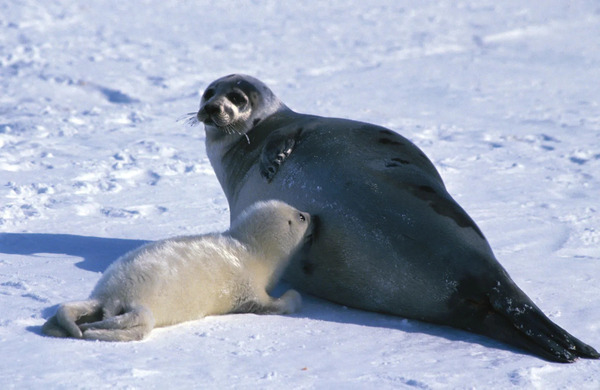Seals are fascinating marine creatures that are often spotted lounging on rocks or swimming gracefully in the ocean. Many people wonder, is a seal a mammal? In this article, we will explore the characteristics that define seals as mammals and explain why they belong to this group of animals. We’ll also delve into the scientific classification of seals and how they differ from other marine creatures.

To answer the question, "Is a seal a mammal?", it is essential to understand the characteristics that define mammals. Mammals are a group of animals that share several key features:
Warm-blooded: Mammals regulate their body temperature internally, meaning they can maintain a stable temperature regardless of the surrounding environment.
Live Birth: Most mammals give birth to live young (with a few exceptions, such as monotremes like platypuses, which lay eggs).
Mammary Glands: Female mammals have mammary glands that produce milk to nourish their young.
Hair or Fur: Mammals have some form of hair or fur on their bodies at some stage of their life cycle.
Vertebrates: Mammals have a backbone or spine made of vertebrae.
Seals are marine mammals that meet all of these defining characteristics. Here’s how seals fit into the mammal category:
Warm-Blooded: Like all mammals, seals are warm-blooded. This means they can maintain a constant body temperature, which is crucial for surviving in cold ocean waters. While they may have thick fur and a layer of blubber to insulate themselves in freezing temperatures, seals do not rely on the temperature of their environment to regulate their body heat.
Live Birth: Seals give birth to live young, unlike fish or amphibians that lay eggs. Female seals typically give birth to a single pup after a gestation period, and the pup is nourished by its mother’s milk.
Mammary Glands: Female seals possess mammary glands that secrete milk to feed their pups. This is a key feature that distinguishes mammals from other animal groups, such as reptiles or fish.
Hair or Fur: Seals, like other mammals, have fur or hair. While their fur is adapted to provide insulation in cold waters, it still functions as hair does in land mammals. Seal pups are often born with a soft, thick layer of fur, which they shed as they grow.
Vertebrates: Seals, like all mammals, have a backbone. Their spinal column allows them to move with great flexibility in the water.
It is important to distinguish seals from other aquarium/52-marine-animals.html">marine animals, especially those that might resemble them. For instance, sea lions, walruses, and even dolphins may share certain characteristics with seals, but their classification differs due to specific traits.
Seals vs. Fish: Fish are cold-blooded, lay eggs, and have gills for breathing underwater. In contrast, seals are warm-blooded mammals with lungs that must surface to breathe air. Seals give live birth and nurse their pups, whereas fish generally lay eggs and do not provide parental care in the same way.
Seals vs. Sea Lions: While both are pinnipeds (meaning "flipper-footed"), sea lions have external ear flaps, can rotate their hind flippers forward to walk on land, and are generally more agile on land than seals. Seals, on the other hand, have no visible external ears, and their hind flippers cannot rotate forward, making them less mobile on land.
Seals belong to the order Carnivora, which includes animals like dogs, cats, and bears. Within this order, seals are classified under the suborder Pinnipedia, which means “flipper-footed.” There are three main families of seals:
Phocidae (True Seals): These are the most commonly recognized seals, such as harbor seals and elephant seals. True seals lack external ear flaps and are not as agile on land as sea lions.
Otariidae (Eared Seals): This family includes sea lions and fur seals. Eared seals have external ear flaps and can walk on land using their rotating hind flippers.
Odobenidae (Walruses): Although they are somewhat distinct from the other seal families, walruses are also part of the pinniped group, sharing many similarities with true seals.
Seals play a significant role in marine ecosystems. As top predators, they help maintain the balance of marine food webs by controlling populations of fish and invertebrates. In addition, they are often indicators of the health of marine environments. Changes in seal populations can reflect broader changes in the ocean's ecosystem, such as pollution levels, water temperature, and fish populations.
To conclude, seals are indeed mammals. They share all the defining characteristics of mammals, including being warm-blooded, giving live birth, nursing their young with milk, having hair or fur, and possessing a backbone. While seals may live in marine environments and share some traits with other aquarium/52-marine-animals.html">marine animals like fish, their biological characteristics firmly place them in the mammal category.
Understanding the classification of seals not only helps us appreciate these unique creatures but also highlights their importance in marine ecosystems. Whether you're an animal enthusiast or just curious about these incredible animals, it's clear that seals are a fascinating example of how mammals have adapted to life in the ocean.
Seals and Sea Lions: Key Differences and Similarities
How Seals Survive in Cold Water: Adaptations and Strategies
The Importance of Seals in Marine Ecosystems and Conservation Efforts
Seals’ status as mammals helps them stand out among marine life, making them both intriguing and essential creatures of our oceans.
animal tags: Seals
We created this article in conjunction with AI technology, then made sure it was fact-checked and edited by a Animals Top editor.